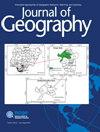土耳其暴风雨日的年际变化
IF 1.8
3区 地球科学
Q1 GEOGRAPHY
引用次数: 2
摘要
气候变率的影响在全球许多地区都可以看到。除了多年来经历的气候变化之外,近年来由于气候变化的影响而导致的气候要素的变率也是至关重要的。在这项研究中,研究了土耳其风暴记录的时空变化和年变率趋势。此外,在研究范围内还研究了控制风暴频率的大气遥相关。根据这项研究的结果,近年来土耳其各地的风暴事件频率显著减少。从统计数据来看,土耳其内陆和东半部的暴风雨天数呈显著上升趋势。土耳其所有沿海地区,特别是西海岸和地中海区域东部的陆地地区,在统计上有显著的下降趋势。在土耳其,冬季NAO对暴风雨天数的影响相当明显。在土耳其东部,NCP与风暴频率呈显著正相关。当评估土耳其风暴频率与大气振荡之间的关系时,可以说NAO和AO是最能解释全国风暴频率的大气振荡指数。本文章由计算机程序翻译,如有差异,请以英文原文为准。
Interannual Variability of Stormy Day Over Turkey
The effects of climate variability are seen in many areas of the globe. In addition to the changes experienced in climates for many years, the variability in climate elements due to the effects of climate change in recent years is critical. In this study, spatial and temporal changes of the year to year experienced variability and trends in storm records in Turkey were examined. Also, atmospheric teleconnections that control storm frequency were examined within the scope of the study. According to the results of the study, significant reductions in recent years in the frequency of storm events are being experienced across Turkey. Stormy days show statistically significant upward trends in the interior and eastern half of Turkey. All coastal regions of Turkey, especially the western coasts and terrestrial areas in the eastern parts of the Mediterranean region experienced statistically significant downward trends. In Turkey, the NAO’s activity on the number of stormy days is quite evident in winter. NCP and frequency of storms is characterized by significant positive correlations in eastern Turkey. When evaluating the relationships between Turkey’s storm frequency and Atmospheric oscillations, one can say that NAO and AO are atmospheric oscillation indices that best explain storm frequency across the country.
求助全文
通过发布文献求助,成功后即可免费获取论文全文。
去求助
来源期刊

Journal of Geography
GEOGRAPHY-
CiteScore
4.90
自引率
6.50%
发文量
12
期刊介绍:
Journal of Geography is the journal of the National Council for Geographic Education. The Journal of Geography provides a forum to present innovative approaches to geography research, teaching, and learning. The Journal publishes articles on the results of research, instructional approaches, and book reviews.
 求助内容:
求助内容: 应助结果提醒方式:
应助结果提醒方式:


